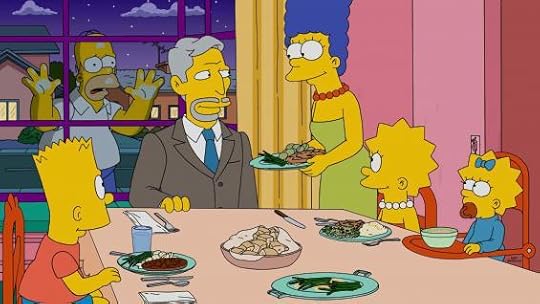Writing Distinctive Dialogue

Distinctive dialogue in The Simpsons
ONE of the most common mistakes we make early on as writers is that we do not give each of our characters distinctive dialogue.
All too often Tom tends to sound like Dick and Dick like Harry. There is little separation in tone, style, idiom colour, let alone subtlety or shading. We mistakenly concentrate on having the dialogue promote plot, rather than simultaneously using it to reveal character, too.
Yet, dialogue, when written well, is one of the most efficient ways of establishing texture and variety in our characters. Watch any episode of the Simpsons and try to redistribute the dialogue between characters. Close to impossible to do. That’s because each utterance belongs to that character and that character alone.
“Distinctive dialogue brims with life and individuality. It transmits the values, manners, texture, idiom, and unique personality of each character in the story.”
The Power of Distinctive Dialogue
In Your Screenplay Sucks, William M. Akers provides us with this example, taken from his adaptation of The Summer Fletcher Greek Loved Me, by Suzanne Kingsbury:
MAN ON A SODA MACHINE
(auctioneer fast)
I’m doing good. Annie May’s on the phone this mornin’, her son
Walter he run around with that little Peterson boy. The Petersons,
they can’t hold themselves together. Big James Earl Peterson,
that’s that boy’s daddy, he gone shot himself through the mouth
last month. Just last Sat’day, that little un done the same thing, .22
on his tongue, and pulled the trigger. Walter gone and have to watch
it. He ten years old.
RILEY
Son of a bitch.
MAN ON A SODA MACHINE
That boy’s fat as a hog, too. Dead fat kid on a back porch in this heat’s
a Goddamn buttache.
Compare this to the career diplomat who’s appalled with America for lying to the South Vietnamese:
MCKILLOP
I’ve been here five years…
(looks at Ellen)
This is my home…And now we’re just running out…
(this kills him)
Nobody asked us to come here. We told those people we’d save
them from the boogie man. And now they trusted us…And now it’s
over…Just shot too pieces. We came in here with our “we wear
coats and ties, we know what we’re doing here folks” attitude, and…
we didn’t…And now… and now, we’re just leaving them like a thief
in the night…leaving them… in such a mess… and, and… I’m so
ashamed and so sorry…
The pace, idiom, texture, and speech patterns between the two is clearly very different, as is their attitude to life. Each character sounds like himself and no other. Try to emulate this in your own characters and watch them spring to life.
Summary
At its best, distinctive dialogue conveys, in a subtle way, the values, texture, idiom and unique personality of each character in the story.
Tweet
The post Writing Distinctive Dialogue appeared first on Stavros Halvatzis Ph.D..



